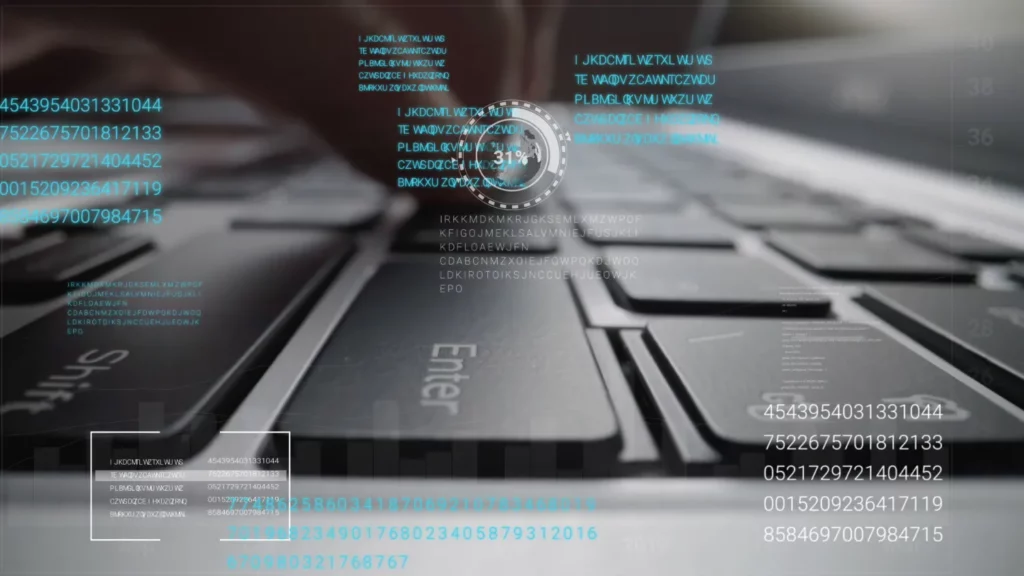
Generative AI is the magic word that fascinates most of us, but what does it have to do with cybersecurity? This is what we are going to know in this article.
Generative AI, with its remarkable capabilities, has revolutionised various industries, including healthcare, entertainment, and customer service. However, the increasing sophistication of generative AI models like ChatGPT and BARD has also raised concerns about their potential misuse and the associated cybersecurity threats. This article delves into the growing threat posed by generative AI in the cybersecurity landscape and explores the challenges it presents, along with the countermeasures that can be implemented to mitigate these risks.
The Power of Generative AI
Generative AI, with its remarkable capabilities, has revolutionised numerous industries, unlocking new possibilities and transforming the way we interact with technology. This powerful technology has the ability to mimic human-like language and generate realistic content, making it an invaluable tool for various applications. The power of generative AI lies in its capacity to create, innovate, and augment human capabilities in several domains.
One of the primary strengths of generative AI is its ability to generate natural language text. Models like GPT-3 and ChatGPT have been trained on vast amounts of data, allowing them to generate coherent and contextually relevant text in response to prompts. This has profound implications for content creation, writing assistance, and customer support. Generative AI can automate the production of engaging and personalised content, from blog posts and articles to social media captions and product descriptions, saving time and resources for businesses.
In the field of creative arts, generative AI is unleashing new possibilities. It can generate music, poetry, and even visual art. Artists can collaborate with generative AI models to explore new creative avenues, leveraging the technology’s ability to produce unique and innovative pieces. This fusion of human creativity and AI-generated content has the potential to redefine artistic expression and inspire entirely new forms of art.

Generative AI also plays a crucial role in simulation and modelling. By training AI models on vast amounts of data, they can simulate real-world scenarios, such as traffic patterns, weather conditions, or complex physical systems. This enables researchers, engineers, and scientists to conduct virtual experiments, test hypotheses, and gain insights into complex phenomena that would otherwise be time-consuming or infeasible.
Language translation and interpretation have significantly benefited from generative AI. Machine translation models can now provide near-instantaneous translations between languages, breaking down communication barriers and facilitating global connectivity. Additionally, AI-powered language interpretation systems can aid in bridging language gaps in various domains, such as healthcare, legal proceedings, and international conferences.
Another area where generative AI demonstrates its power is in the realm of personalised recommendations and user experiences. By analysing user preferences, behaviour, and historical data, AI models can generate tailored recommendations for products, services, and content. This enhances user engagement, increases customer satisfaction, and drives business growth by delivering personalised experiences to individuals.
The power of generative AI lies in its ability to generate human-like language, facilitate creative expression, simulate complex scenarios, enable efficient communication across languages, and provide personalised experiences. The applications of generative AI span various industries, including marketing, entertainment, healthcare, education, and research. As this technology continues to advance, it holds the potential to redefine how we interact with machines, opening up new frontiers and unlocking new opportunities for innovation and progress.
The Dark Side: Cybersecurity Threats
Generative AI, with its impressive capabilities, has the potential to empower cybercriminals and enable new forms of cybersecurity threats. While generative AI offers numerous benefits, its misuse can pose great risks to the security of individuals, organisations, and even society as a whole. Here are some of the cybersecurity threats enabled by generative AI:
- Phishing Attacks: Generative AI can be used to create highly convincing phishing emails or messages. By mimicking the style and tone of legitimate communications, cybercriminals can trick individuals into revealing sensitive information or clicking on malicious links.
- Social Engineering: Generative AI can generate realistic personas, complete with detailed backstories, to deceive individuals and gain their trust. Cybercriminals can use these personas to manipulate people into sharing confidential information or performing unauthorised actions.
- Deepfake Content: Generative AI can create convincing deep fake videos, images, or audio recordings. This poses a significant threat as malicious actors can use deepfakes to spread disinformation, defame individuals, or impersonate someone for illicit purposes.
- Malware Development: Generative AI can be employed to develop sophisticated malware. By using AI algorithms, cybercriminals can enhance the evasiveness of malware, making it harder to detect and analyse by traditional security systems.
- Automated Hacking: Generative AI can automate various stages of the hacking process, including reconnaissance, vulnerability scanning, and exploit development. This can significantly accelerate and scale cyber attacks, allowing cybercriminals to target multiple systems simultaneously.
- Password Guessing: With its ability to analyse patterns and generate likely combinations, generative AI can aid in cracking passwords. This puts user accounts, sensitive data, and critical systems at risk of unauthorised access.
- Evasion of Security Measures: Generative AI can be used to develop techniques for bypassing security measures, such as intrusion detection systems and firewalls. By analysing system vulnerabilities and developing novel attack vectors, cybercriminals can find new ways to exploit weaknesses in security defences.
- Data Manipulation: Generative AI can manipulate or generate synthetic data that appears legitimate to fool machine learning algorithms and automated systems. This can lead to skewed decisions, compromised integrity, and inaccurate analytics, affecting critical processes and decision-making.
- Automated Spear Phishing: Generative AI can automate the customisation of spear-phishing attacks by generating personalised messages and content tailored to specific individuals or organisations. This increases the effectiveness of targeted attacks and makes them harder to detect.
- AI-Powered Botnets: Generative AI can be used to enhance the capabilities of botnets, enabling more sophisticated and coordinated attacks. By leveraging AI algorithms, botnets can adapt, evolve, and evade detection, making them even more challenging to mitigate.

It is important for cybersecurity professionals and organisations to stay vigilant, adapt to emerging threats, and develop robust defence mechanisms to counter the risks associated with generative AI. This includes proactive monitoring, threat intelligence, AI-based anomaly detection, and continuous evaluation of security practices. By understanding and addressing the potential cybersecurity threats enabled by generative AI, we can ensure a safer digital environment for individuals, businesses, and society at large.
Potential consequences of threats
Cybersecurity threats enabled by generative AI have the potential to cause significant consequences across various domains. Here are some potential consequences:
Misinformation and Disinformation: Generative AI can be used to create convincing fake content, including news articles, social media posts, and multimedia, leading to the spread of misinformation, manipulating public opinion, and causing social unrest. The consequences may include erosion of trust, political instability, and damage to reputations.
Identity Theft and Fraud: Generative AI can be employed to generate realistic fake identities, documents, or credentials. This can enable identity theft, fraud, and unauthorised access to personal or financial information. The consequences may include financial ruin, reputational damage, and compromised digital identities.
Privacy Invasion: Generative AI can be utilised to manipulate images, videos, or audio recordings, potentially violating privacy rights. Deepfakes and manipulated media can lead to the unauthorised use of an individual’s personal information, resulting in emotional distress and reputational harm.
Erosion of Trust in Media: The proliferation of manipulated content created with generative AI can erode trust in media sources. This can lead to scepticism and a decreased reliance on information, making it challenging for individuals to distinguish between genuine and manipulated content.
Damage to Critical Infrastructure: Generative AI-powered attacks can target critical infrastructure systems, such as power grids, transportation networks, or healthcare systems. These attacks can disrupt services, cause operational failures, and impact public safety. The consequences may include service outages, financial impact, and potential threats to human lives.
Legal and Ethical Concerns: The misuse of generative AI in cyberattacks raises legal and ethical concerns. It may violate privacy laws, intellectual property rights, and regulations governing the responsible use of AI technologies. Consequences may include legal repercussions, regulatory penalties, and reputational damage.
To mitigate these potential consequences, it is crucial to invest in robust measures of cybersecurity, such as advanced threat detection systems, employee training on recognising and responding to threats, secure software development practices, and collaborations between industry, academia, and government to address emerging challenges. Additionally, ongoing research, innovation, and regulatory frameworks can help navigate the evolving landscape of generative AI-enabled cybersecurity threats.
Challenges in Addressing Generative AI Threats
Addressing generative AI threats in cybersecurity comes with several challenges. Here are some key challenges that need to be addressed:

Detection and Attribution:
Generative AI-generated content can be highly sophisticated and realistic, making it difficult to detect and attribute to its source. Traditional detection methods may not be effective in identifying manipulated or fake content. Developing advanced techniques and algorithms that can accurately detect and attribute generative AI-generated content is a significant challenge.
Evolving Techniques:
As generative AI techniques continue to evolve, cybercriminals can quickly adapt and create new attack methods. Keeping up with these evolving techniques requires continuous research and development of new defence mechanisms. Cybersecurity professionals need to be ahead of the curve to effectively combat emerging threats.
Limited Training Data:
Generative AI models require substantial amounts of training data to generate high-quality content. However, in the context of cybersecurity, access to real-world training data can be limited due to privacy concerns or the sensitive nature of the data. Generating realistic and diverse training data that accurately represent potential threats becomes a challenge.
Adversarial Attacks:
Adversarial attacks are a significant concern in generative AI. Cybercriminals can exploit vulnerabilities in AI models to manipulate or deceive the system. Adversarial attacks specifically designed to exploit generative AI algorithms can bypass security measures and compromise the integrity of the system.
Ethical Considerations:
The use of generative AI in cybersecurity raises ethical concerns. It can be used for malicious purposes, such as creating deep fake content for social engineering attacks or impersonating individuals for fraudulent activities. Striking a balance between leveraging generative AI for security purposes and ensuring responsible and ethical use is a challenge that requires careful consideration.
Collaboration and Information Sharing:
Effectively addressing generative AI threats requires collaboration and information sharing among cybersecurity professionals, researchers, and industry stakeholders. Sharing insights, best practices, and threat intelligence can help in developing robust defence strategies. However, concerns related to data privacy, competitive advantage, and legal implications can hinder seamless collaboration.
Regulatory Frameworks and Legal Challenges:
The regulatory landscape surrounding generative AI is still evolving. Developing appropriate regulations and legal frameworks to govern the use and deployment of generative AI in cybersecurity is a complex task. Addressing legal challenges related to privacy, intellectual property rights, and accountability is crucial to ensure responsible use and mitigate potential risks.
Human Factors:
Human factors, such as user awareness and education, play a vital role in addressing generative AI threats. Educating users about the risks associated with manipulated content, phishing attacks, and social engineering is essential to prevent successful cyber attacks. However, changing user behaviours and creating a cybersecurity-conscious culture pose ongoing challenges.
Addressing these challenges requires a multidisciplinary approach involving technical expertise, policy development, collaboration, and ongoing research. By proactively addressing these challenges, the cybersecurity community can better protect individuals, organisations, and critical infrastructure from the threats posed by generative AI.
The Future of Generative AI and Cybersecurity
Generative AI has emerged as a powerful technology with various applications and implications for cybersecurity. As this field continues to evolve, the future of generative AI in the context of cybersecurity holds both opportunities and challenges. Here are some aspects to consider:
Enhanced Threats: With advancements in generative AI, cyber threats are expected to become more sophisticated and difficult to detect. Attackers can leverage generative AI algorithms to create highly convincing fake content, making it challenging for traditional security measures to differentiate between genuine and manipulated data. This poses a significant challenge to organisations and security professionals in defending against emerging threats.
Defence and Countermeasures: As attackers embrace generative AI techniques, the cybersecurity community needs to develop advanced defence mechanisms and countermeasures. This includes investing in AI-driven cybersecurity solutions that leverage machine learning algorithms to detect and combat evolving threats. Security systems need to adapt to the changing landscape by utilising generative AI to identify and analyse patterns, anomalies, and potential attack vectors.
Improved Authentication and Verification: Generative AI can also be harnessed for enhancing authentication and verification processes. By leveraging techniques such as biometrics, behavioural analytics, and facial recognition, generative AI can strengthen identity verification systems and prevent unauthorised access. This can help in reducing identity theft, fraud, and unauthorised system access.
Ethical Considerations: The ethical implications of generative AI in cybersecurity cannot be ignored. As technology becomes more advanced, there is a need for responsible and ethical use to prevent misuse and potential harm. Transparent and accountable practices should be implemented to ensure the ethical boundaries of generative AI in cybersecurity are upheld.
Collaborative Efforts: The future of generative AI and cybersecurity requires collaboration between various stakeholders. Close collaboration between researchers, cybersecurity professionals, policymakers, and industry leaders is essential to develop effective strategies, share insights, and address emerging challenges. Additionally, partnerships with academia and research institutions can drive innovation and foster the development of secure and resilient systems.
Regulatory Frameworks: As generative AI becomes more prevalent in cybersecurity, regulatory frameworks will play a crucial role in ensuring the responsible use of these technologies. Policymakers need to stay updated on the advancements in generative AI and enact laws and regulations that govern its deployment, protect privacy, and mitigate potential risks.
Continuous Learning and Adaptation: The field of generative AI and cybersecurity will continue to evolve rapidly. It is crucial for cybersecurity professionals to stay updated with the latest trends, threats, and defence strategies. Continuous learning, research, and skill development will be essential to effectively respond to the evolving landscape of generative AI-enabled cybersecurity challenges.

Wrapping up!
Generative AI has ushered in a new era of technological possibilities, but it also brings significant cybersecurity risks. By understanding these risks, implementing robust security measures, and promoting responsible use, we can harness the power of generative AI while safeguarding against its potential misuse. The article emphasises the need for a comprehensive approach that combines user awareness, technical defences, ethical considerations, and industry collaboration to effectively address the growing cybersecurity threat posed by generative AI.
